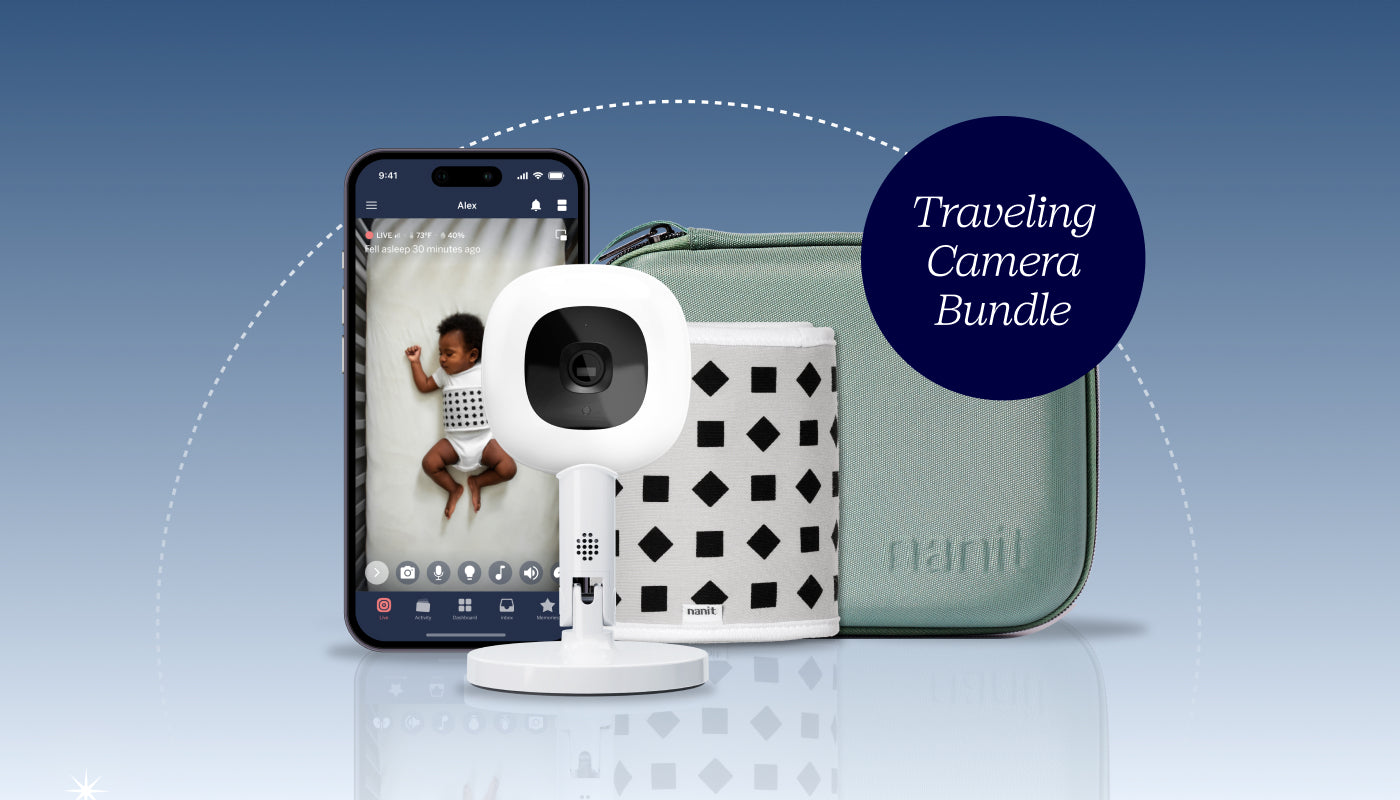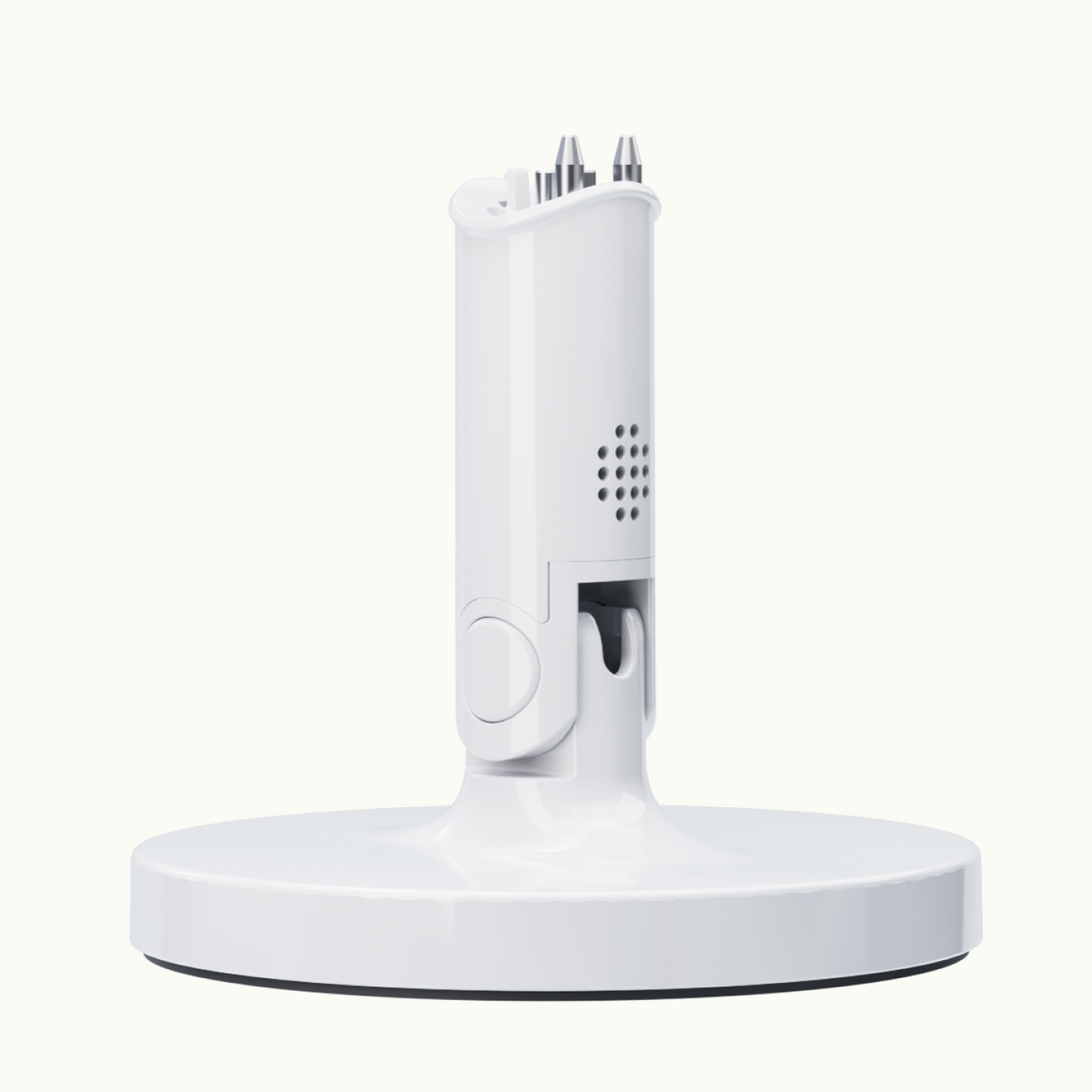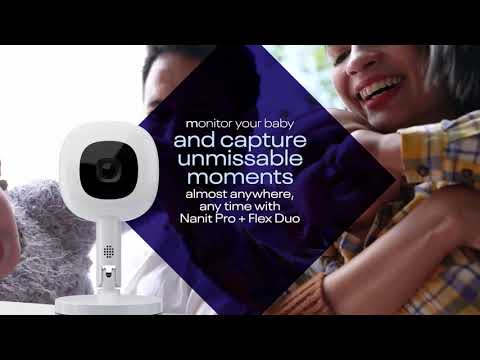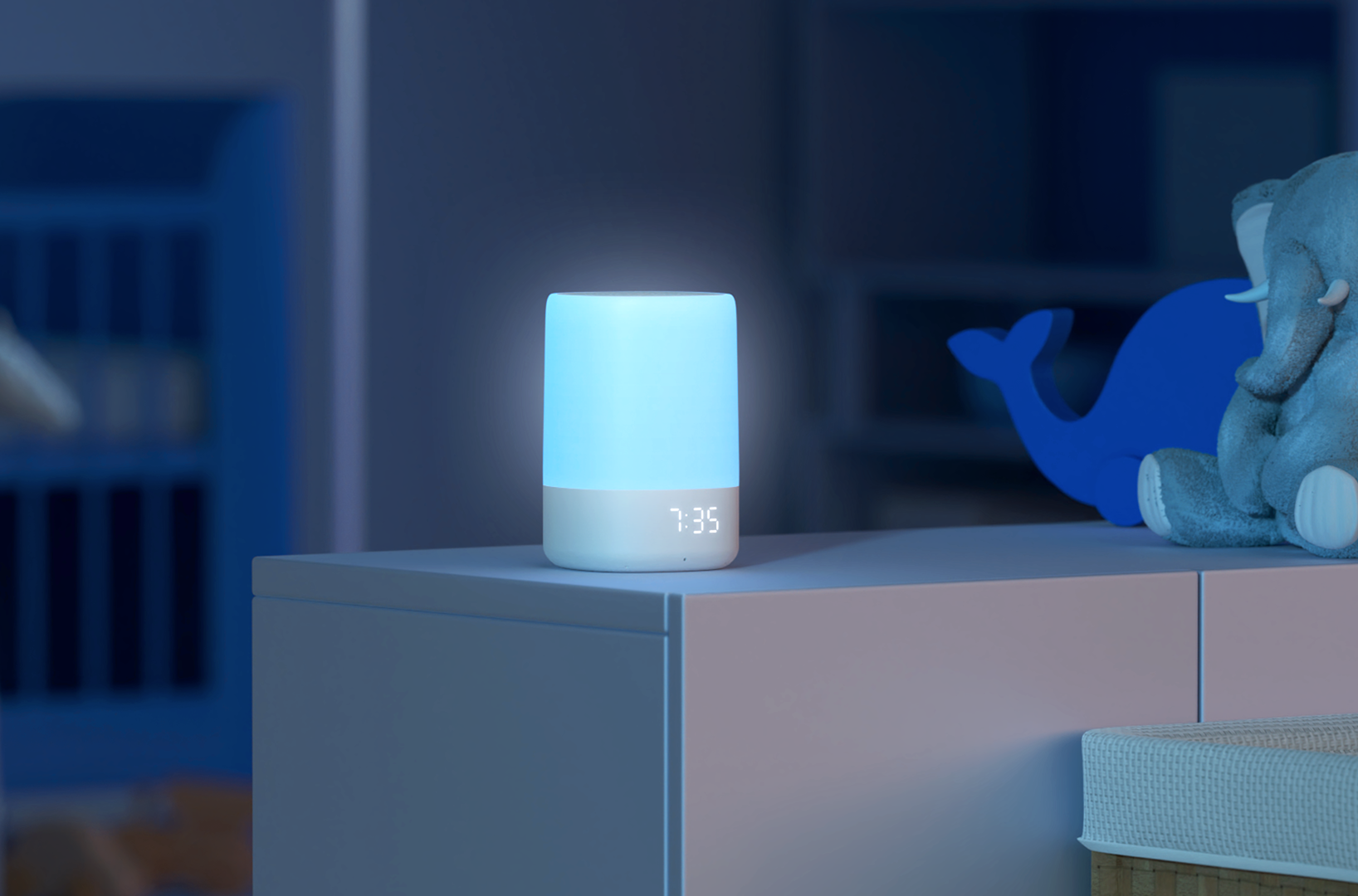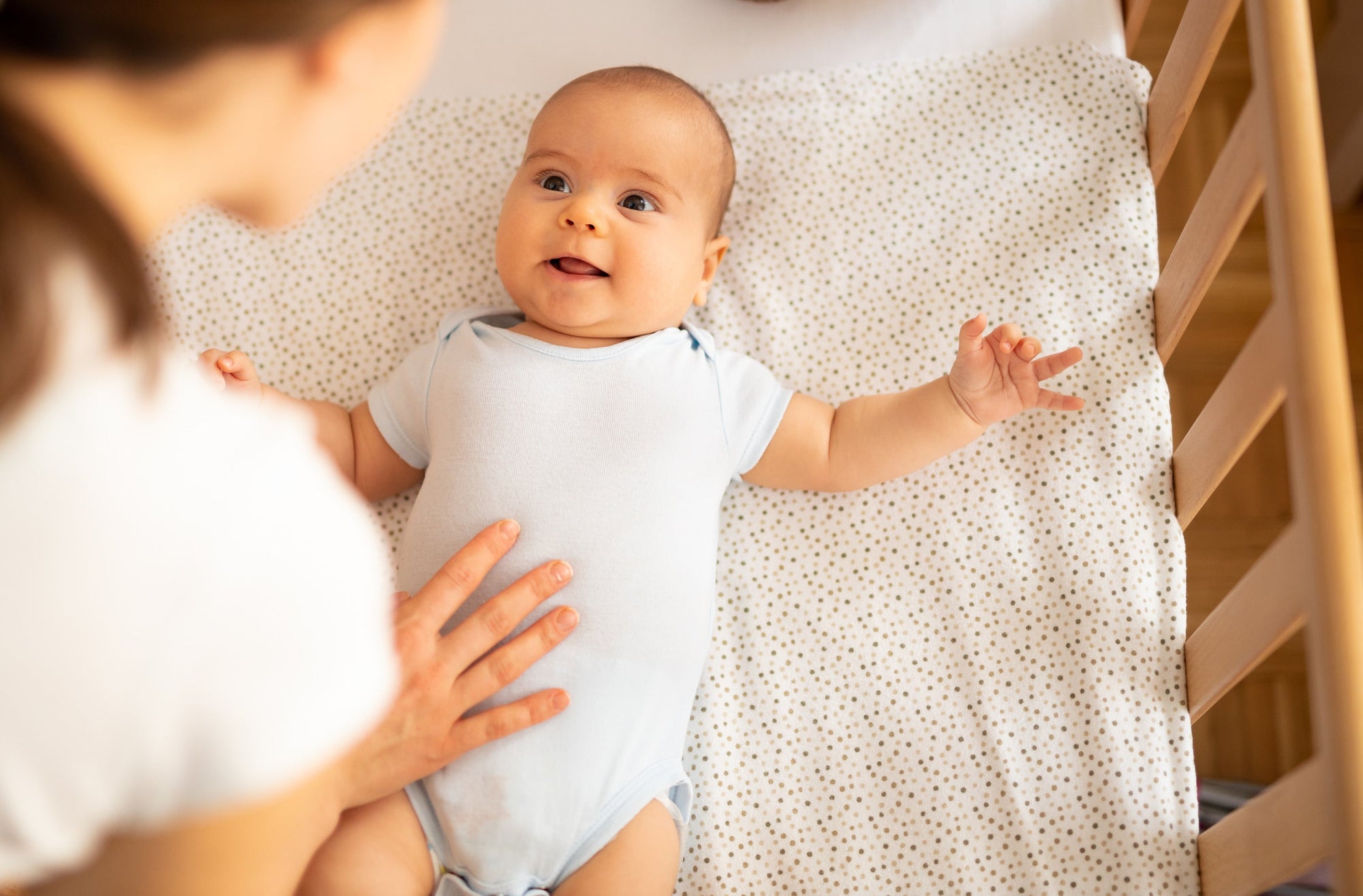Why do babies find white noise so soothing?
For parents, ensuring baby (and therefore the whole family) gets a good night's sleep is a top priority. In the search for that mostly or even somewhat uninterrupted night of rest, most parents will try every possible trick and tool to keep their little one peacefully snoozing as long as possible.
There’s one tool that you may have not tried and should definitely consider: white noise.
A modern sleep innovation, white noise is a calming non-lullaby that could soothe your baby at night. Why does white noise help babies sleep and how can you use white noise with your little one? In this blog post, we'll dive into the world of this special sound, from its helpfulness for parents to its best uses for infants specifically.
What is white noise?
Before diving into the benefits of white noise for babies, let's clarify what it actually is. What makes this particular sound so calming?
Think of white noise as the auditory equivalent of a blank canvas. This noise is a consistent sound that encompasses all audible frequencies, creating a soothing blanket of noise around 20 hertz (Hz). Many people may compare white noise to other noises like:
- A soft “shhh”
- Television static
- Fans
- Canister sprays
- Vacuums on a low setting
White noise machines generate this soothing sound to create a consistent background noise for an ideal sleeping environment.
Why does white noise help babies sleep?
A simple “shhhh” seems almost too good to be true as a sleeping tool. In its essence, white noise is thought to be reminiscent of the womb. The calming, continuous noise is a welcome alternative to dead silence or disruptive sounds at night.
There’s some concrete science behind this tranquil phenomenon. our little one’s brain cycles in and out of “deep sleep” and “light sleep” around every 20 minutes, which can lead to a significant number of mid-slumber wakeups. While white noise is not a cure-all solution, some studies show that it could significantly improve the quality and duration of sleep:
- In a study with neonates (babies between 2 and 7 days old), white noise helped 80% of neonatal subjects fall asleep within 5 minutes.
- In a Nanit Lab study, babies slept an average of 2 hours longer per night with white noise
- In a study of one-year-old children, a continuous white noise level of 75 dB improved sleep quality parameters—such as the number of night wakings, nighttime child feedings and sleeping patterns, and duration of resistance going to sleep.
- In a high-noise environment, white noise was shown to improve sleep quality significantly in adults.
Should you use white noise with a baby?
Is white noise the sound of peace? The answer is a resounding (or a hushed) yes—but with some precautions.
While white noise can be incredibly beneficial for most babies, it's essential to use it safely and judiciously. After all, your baby’s ears are delicate and developing organs. In fact, any sustained noise level above 50 dB, which is equal to moderate rainfall or dishwashers, can lead to damage in an infant’s ears. To keep your baby safe and slumber-ready around a white noise machine, follow these tips:
- Volume control. Always keep your white noise machine at a safe volume. If possible, you should check the decibel levels of your machine’s settings (using a decibel meter or smart phone app) and choose any below 50 dB. The noise should be loud enough to mask other small noises, but not so loud that it becomes disruptive to your baby's hearing.
- Duration. While you may occasionally use white noise machines outside of sleep, it’s best not to keep them running all day and night. If so, your child may start to confuse daytime and nighttime.
- Placement. The placement of your white noise machine can determine if it’s dangerous or safe for your baby. Position the white noise machine at least 6.5 feet from your baby's crib to prevent it from being too close to their ears.
- Machine quality. Not all white noise machines are created equal. It’s best to use white noise machines with baby-friendly settings (i.e., below 50 dB).
Nanit: your baby’s partner-in-sleep
Sleep is a precious commodity for parents. Luckily, white noise could unlock more restful nights and happier days for your family, as long as it’s used properly and meets quality standards.
With Nanit, you can help build the sleep-ready environment that your baby deserves. If you’re wondering, "Do babies need a night light?" the Nanit Sound + Light machine provides the perfect solution for bedtime routines. With 11 soothing sounds, it also includes a color-customizable night light, Cry Detection and Remote Connection features, plus a smartphone app for you to easily control all settings from any location.
Key takeaways
- White noise is a calming, consistent sound that resembles the auditory environment of the womb, making it soothing for babies.
- White noise can help improve the quality and duration of a baby's sleep by providing a continuous background noise that masks other disruptive sounds.
- When using white noise with a baby, it's important to do so safely by controlling the volume, limiting its duration, placing the machine at a safe distance from the crib, and choosing a quality white-noise machine with baby-friendly settings. Nanit offers the innovative Sound + Light device designed to meet these safety and sleep needs.
Sources:
Mindbody Green. How To Use White Noise For Babies: 5 Things You Need To Know. https://www.mindbodygreen.com/articles/how-to-use-white-noise-for-babies-things-you-need-to-know
NIH. White noise and sleep induction. https://pubmed.ncbi.nlm.nih.gov/2405784/
Pediatrics. Infant Sleep Machines and Hazardous Sound Pressure Levels. https://publications.aap.org/pediatrics/article-abstract/133/4/677/32749/Infant-Sleep-Machines-and-Hazardous-Sound-Pressure?redirectedFrom=fulltext
Sleep Foundation. What Is White Noise? https://www.sleepfoundation.org/noise-and-sleep/white-noise
Taylor & Francis Online. Continuous White Noise to Reduce Resistance Going to Sleep and Night Wakings in Toddlers. https://www.tandfonline.com/doi/abs/10.1300/J019v27n02_01?journalCode=wcfb20
